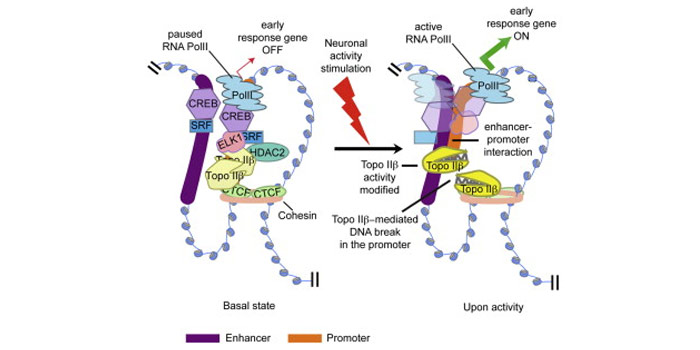A new study by MIT researchers claims that the same process which enables the brain to learn as well as generate new memories is responsible for cognitive and age-related degeneration. Brain cells are found to physiologically break DNA in order to permit select genes to be expressed. This damage needs to be repaired immediately.
But as we grow older, the ability to fix the damage to the DNA weakens. The observation could eventually lead to new solutions for preventing cognitive decline witnessed in disorders like Alzheimer’s disease. Age and certain genetic conditions cause the efficiency of the DNA repair system to be compromised and accumulate the destruction over time.

Li-Huei Tsai, Picower Professor of Neuroscience and director of Picower Institute for Learning and Memory (MIT), says that neurons are required to break their DNA to allow expression of early response genes. This is what kicks off behaviors like learning and memory through the transcriptional program.
Older research has found DNA lesions called double strand breaks in the neurons in the hippocampal area of the brain. They show up even in the pre-symptomatic phase of Alzheimer’s in mice. The MIT team introduced a toxic agent to a set of neurons in order to induce these breaks.
Then they harvested the RNA from the cells for sequencing and discovered the vast majority of 700 altered genes to manifest reduced expression levels. Although DNA lesions are thought to be very damaging because they can be mutagenic and even lead to cancer, it’s a natural process.
These breaks are essentially a physiological function of the brain cell. The experiment also showed 12 genes to have higher expression levels after the double strand breaks. It happened because of an architectural protein known as CTCF which creates bends in the DNA structure.
The bends stop different elements of DNA from interacting with each other. The double strand breaks permits the barrier to be collapsed so that early response genes can be expressed. The enzyme identified as topoisomerase IIβ causes DNA lesions in response to stimulation.
With the enzyme out of the picture, the double strand breaks and expression of early response genes were reduced. The MIT researchers, whose latest discovery has been published in the journal Cell, plan to study if certain chemicals can improve the DNA repair system.
